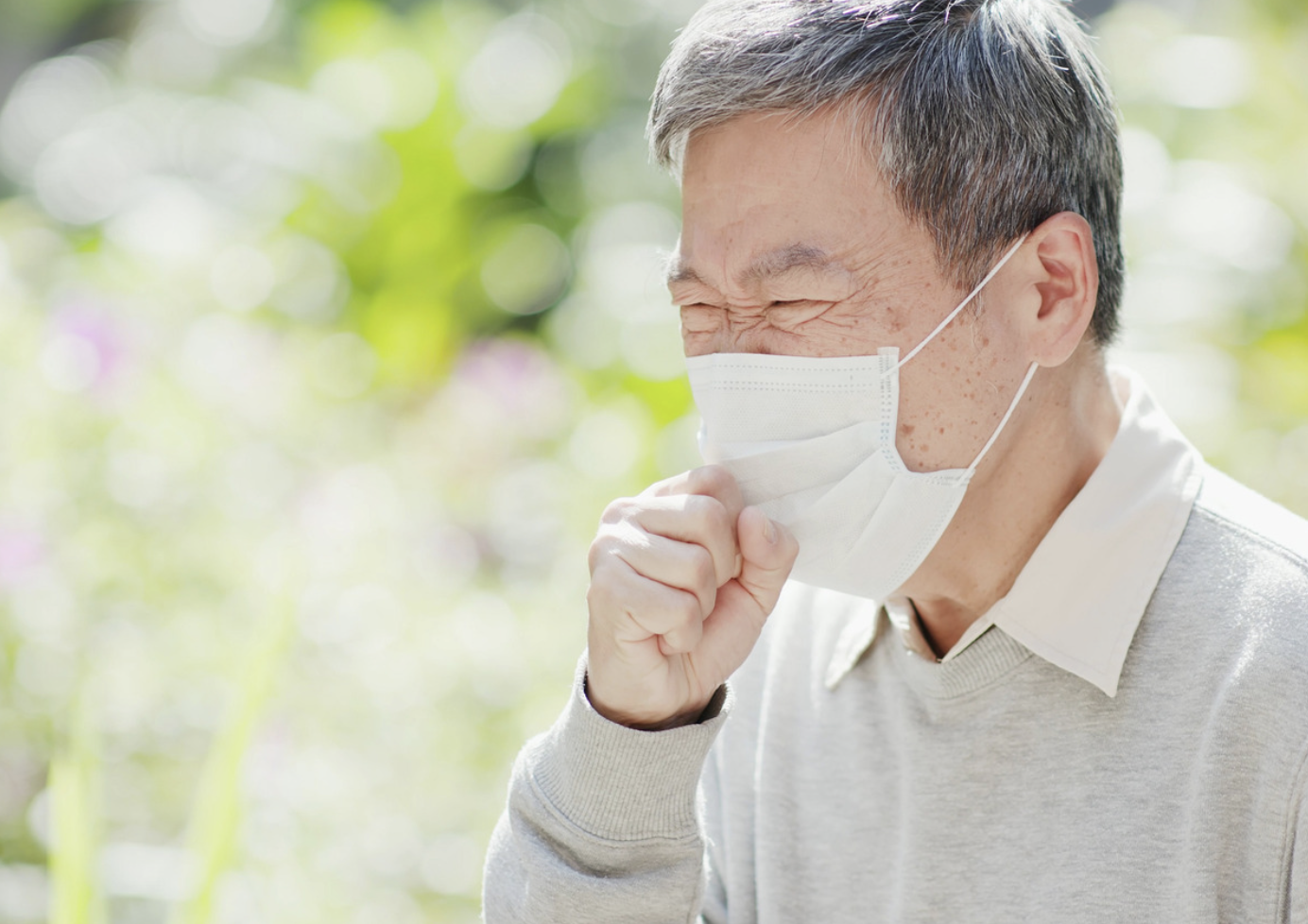Definition
Bronchitis is an inflammation of the lining of the airways called bronchi, which are the branches of the trachea. The bronchi connect the throat to smaller airways (called bronchioles), which function to carry air into the lungs. The bronchi are divided into left and right branches in each lung. Under normal conditions, the airway walls produce mucus to trap dust and other inhaled particles during breathing to prevent inflammation. In bronchitis, the inflamed airways produce more mucus, leading to coughing.
Bronchitis can be divided into 2 types based on the duration of the illness:
- Acute bronchitis is the more common type, usually caused by viral infections. Its onset can be associated with and exacerbated by smoking. Symptoms can last for 10 to 14 days and, in some cases, persist for up to three weeks. Acute bronchitis can occur at any age, but most cases occur in children under the age of 5.
- Chronic bronchitis, is characterized by persistent productive cough lasting for three months in a year for at least two consecutive years. Coughing and inflammation can be caused by an infection or other respiratory diseases, exposure to cigarette smoke, or other irritants in the air. Chronic bronchitis can lead to airflow obstruction, usually classified as Chronic Obstructive Pulmonary Disease (COPD).
Causes
Here are some factors that can cause bronchitis:
- Viral and bacterial infections: Bronchitis is usually caused by viral infections, although bacterial infections can also be responsible in some cases. Most instances of bronchitis stem from the same viruses that cause the common cold or flu. These viruses spread through droplets expelled from the nose and mouth when someone coughs or sneezes. Droplets typically travel within a 1-meter radius and can linger in the air before settling on surfaces, where the virus can survive for up to 24 hours. Individuals who touch these contaminated surfaces can then become infected and transmit the virus to others.
- Repeated inhalation of irritants: Bronchitis can also be triggered by recurrent exposure to inhaled irritants, such as smoke, chemicals in household products, or cigarette smoke. Cigarette smoke is the primary cause of chronic bronchitis, affecting both active and passive smokers.
- Exposure to substances in the workplace environment: Certain materials and substances encountered in the workplace can also lead to bronchitis. These may include:
- Dust particles
- Fabric fibers (textiles)
- Ammonia
- Strong acids
- Chlorine
Risk factor
Factors that can increase your risk of suffering from bronchitis include:
- Cigarette smoke: Individuals who smoke or live with smokers are at a higher risk of developing both acute bronchitis and chronic bronchitis.
- Weak immune system: This can be caused by other illnesses, such as the flu, or by chronic diseases that disrupt the immune system. The elderly, infants, and young children are particularly vulnerable to infections.
- Exposure to irritants in the workplace: Your risk of bronchitis is elevated if you work in an environment with certain irritants, such as dust, textile fibers, or exposure to chemical fumes.
- Gastroesophageal Reflux Disease (GERD): GERD can irritate your throat, making you more susceptible to bronchitis.
- Asthma and allergies: Individuals suffering from asthma and allergies are also at an increased risk of developing bronchitis.
Symptoms
Symptoms that may occur in bronchitis patients include:
- Productive cough (phlegm may be clear, white, greyish-yellow, or greenish, and there may be blood spots in certain cases)
- Fatigue
- Shortness of breath
- Mild fever and chills
- Discomfort in the chest
- Wheezing when breathing (not always present)
- Sore throat
- Stuffy nose
If you have acute bronchitis, you may also experience flu-like symptoms, such as mild headaches or body aches. While these symptoms typically improve within about a week, you may endure a lingering cough for several weeks. For those with chronic bronchitis, periods of worsened coughing or other symptoms may occur, often triggered by another infection.
Diagnosis
In diagnosing bronchitis, the doctor will begin by interviewing you to inquire about the symptoms you are experiencing, including the characteristics of your cough and phlegm, any history of other lung diseases, occupational history, and smoking habits. Then, the doctor will perform a physical examination, particularly focusing on the lungs by listening to the breath sounds using a stethoscope. In some cases, your doctor may recommend the following additional tests:
- Chest X-ray: This helps determine whether you have pneumonia (inflammation of the lungs) or another condition that may be causing your cough. This examination is particularly important if you have ever smoked or are currently a smoker.
- Sputum test: Sputum is the fluid/mucus produced by the lungs and expelled when you cough. Sputum examination is typically used to check for signs of bacterial infection in the sputum or for any allergies.
- Spirometry test: This assesses lung function. You will be asked to blow into a spirometer device to measure how much air your lungs can hold and how quickly you can exhale. This test checks for signs of obstruction in the airways, such as asthma or emphysema.
Management
Most cases of acute bronchitis can improve without treatment, usually within a few weeks. Some management options that may be provided for cases of bronchitis include:
Medications
Since most cases of bronchitis are caused by viral infections, antibiotics are not very effective. However, if the doctor suspects you have a bacterial infection, they may prescribe antibiotics. Other medications that may be prescribed include:
- Cough medicine: If coughing disrupts sleep, try cough suppressants before bedtime.
- Other medications: If you have allergies, asthma, or chronic obstructive pulmonary disease (COPD), your doctor may recommend inhalers to reduce inflammation and open narrowed airways in your lungs.
Therapy
If you have chronic bronchitis, you can reduce symptoms by participating in a pulmonary rehabilitation program, where breathing exercises will be taught to help you breathe more easily and improve your ability to exercise.
Additionally, the following methods can help you feel better in managing bronchitis:
- Avoiding lung irritants: For example, do not smoke, use a mask when the air is polluted, or be at risk of exposure to irritants, such as strong-smelling paint or household cleaners.
- Using a humidifier: Warm and moist air can help relieve coughing and thin mucus in your airways. However, clean the humidifier according to the manufacturer's recommendations to avoid the growth of bacteria and fungi in the water reservoir.
- Using a face mask when going outside: If cold air worsens coughing and causes shortness of breath, use a face mask to avoid cold air before going outside.
Complications
The most common bronchitis complication is pneumonia, which can occur if the infection spreads further into the lungs. In people with pneumonia, the air sacs in the lungs fill with fluid. Pneumonia is more likely to occur in the elderly, smokers, and those with other medical conditions or weakened immune systems. This condition can be dangerous and life-threatening. Recurrent bronchitis can also indicate that you have COPD.
Prevention
Ways to reduce the risk of bronchitis include:
- Avoiding cigarette smoke: Cigarette smoke can increase the risk of chronic bronchitis.
- Many cases of acute bronchitis are caused by the influenza virus. Getting an annual flu vaccination can help protect you from getting the flu. You may also consider vaccinations that protect against some types of pneumonia.
- Handwashing: To reduce the risk of viral infections, wash your hands frequently and use alcohol-based hand sanitizers.
- Use masks: If you have COPD, consider wearing a face mask at work if you are at risk of exposure to dust or smoke, and when in crowded places.
When to see a doctor?
Consult a doctor promptly if your cough:
- Lasts for more than three weeks
- Interferes with your sleep
- Is accompanied by high fever (>38°C)
- Shows a change in the color of phlegm
- Contains blood
- Causes wheezing or shortness of breath
- dr. Yuliana Inosensia
Bronchitis. (2017). Retrieved 17 January 2022, from https://www.mayoclinic.org/diseases-conditions/bronchitis/symptoms-causes/syc-20355566
Bronchitis. (2019). Retrieved 17 January 2022, from https://my.clevelandclinic.org/health/diseases/3993-bronchitis
Bronchitis. (2019). Retrieved 17 February 2022, from https://www.nhs.uk/conditions/bronchitis/
McIntosh, James. Symptoms and Treatment of Bronchitis. (2019). Retrieved 17 January 2022, from https://www.medicalnewstoday.com/articles/8888
Robinson, Jennifer. Bronchitis. (2020). Retrieved 17 January 2022, from https://www.webmd.com/lung/understanding-bronchitis-basics











